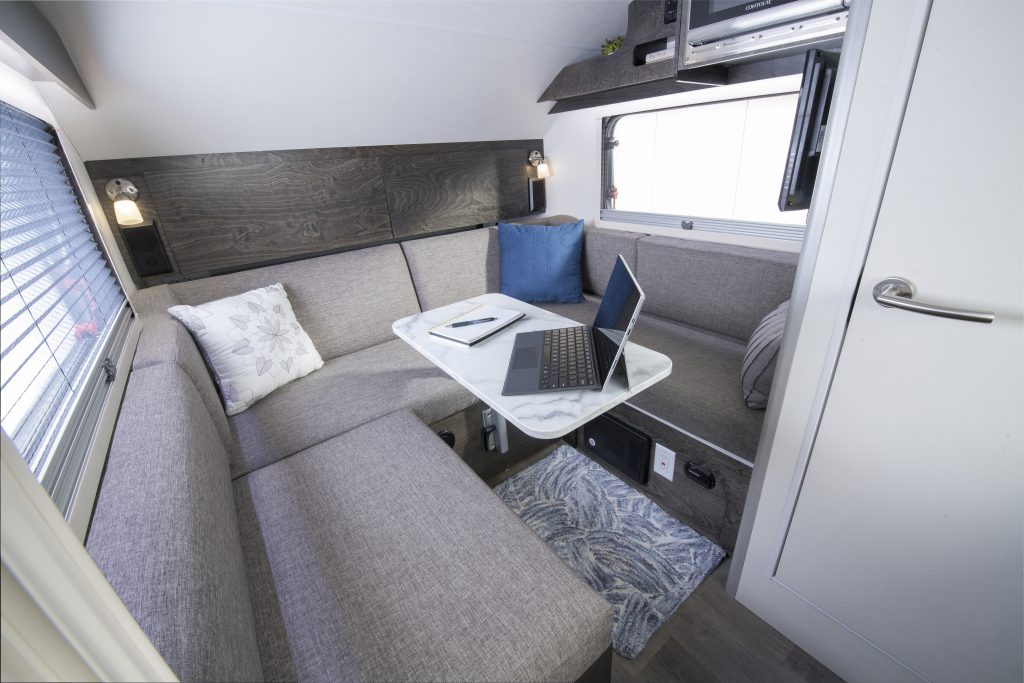You know what’s in your camper, right?
If something happened, would you be able to present the police or the insurance company with an itemized list of everything that was part of your home-on-wheels?
Chances are that, while you might have a rough idea of what you’ve been taking on the road, you don’t have the kind of detailed records that help in case of a claim. As Powersports Insurance Agency explains, if your RV suffers major damage, the items inside will probably take a hit as well. When you file a claim, your insurance provider will ask you for a list of damaged items, their value and proof of ownership. If you’re lacking any of those elements, you can run into trouble with your claim. So before your next road trip, set aside a few hours to create an up-to-date camper inventory.
Tip: A spreadsheet program like Excel or Google Sheets is a useful way to maintain your inventory. Set up columns for purchase date, make, model, serial number or VIN, purchase cost, replacement cost, and descriptions. You can further refine your inventory by using multiple sheets. For example, create one for equipment, another for personal items, and another for household goods. For quick access, store a copy in the cloud and back it up to a flash drive that you carry with you.
As you’re assembling your receipts, make sure you also have all the relevant equipment manuals. Store them in a plastic tote and bring them along with you—just in case you need to refer to one of them while on the road!
Camper and installed equipment
Start with the camper itself: make, model, and vehicle identification number (VIN) and purchase price. List when and where it was purchased and any add-ons or customizations that were included. Make a digital copy of your receipt (use your cell phone to take a picture) and save it with your inventory.
Next list all the installed equipment: make, model and serial number along with a brief description, especially those items with separate, stand-alone warranties. This can include the stove, microwave and refrigerator, the converter, HVAC equipment, and smoke and CO detectors. Do you have an awning, a screen room, or cargo carrier? Be sure to list those as well.
Tip: Either take photos or videotape the interior and exterior (including inside cabinets and closets) as you are developing your inventory list. This will provide you with additional documentation in case you overlook any items.
Household goods
Start with bedding and pillows, towels and kitchen linens, curtains and throw rugs. Then move on to appliances. This includes the coffeemaker, can opener, tabletop cookers or grills (inside or outdoor styles), pots and pans, dishes, glassware and silverware, and other kitchen items.
Include entertainment items (stereo and television), furnishings (lamps, small tables, etc.) and personal care items (electric toothbrushes, hair dryer, etc.). (If your electronics or technology items are primarily for business use, see the Business equipment section.)
Tools and repair items
You’re probably carrying a fair bit of hand tools so you can do on-the-road repairs. List them as well as items like wheel chocks, leveling blocks and jack pads, small ladders, or other items. Don’t forget the small items: fuses, screws, gaskets and other items needed to repair or replace a broken part.
Business equipment
If you are operating a business while on the road, you may need commercial inland marine coverage. According to The Hartford, this coverage provides protection for assets and property that is movable or could be in transit over land (think your laptop or other communications equipment). It also covers property owned by others that is in your possession.
Personal items
This includes clothing, jewelry and footwear, and are most likely items that change with the season or your travel destination. Otherwise, you can just group them into categories: 5 sweatshirts, 3 pair of men’s boots, 7 pairs of jeans.
Carrying personal medical equipment such as a CPAP machine? Make sure it’s on the list. If any of your items are valuable, provide a detailed description and check with your insurance agent if you should obtain a Personal Articles Policy or a rider. You might also want to buy a safe. DoItYourselfRV.com has tips in 10 Ways To Hide & Protect Valuables Using Trickery Or RV Safe.
Misc. items
Are you bringing along an ATV, golf cart or kayak? Add them to the list as well. The same goes for firearms, fishing or hunting equipment, auxiliary generators or extra propane tanks.
Need more help putting together your inventory? Mike and Cindy Hartman’s RV Contents Inventory: An Inventory How-to Guide plus Templates for Camping Trailers, Fifth-wheels & Motor Homes has more information. Now that you’ve completed your inventory, you may be wondering if you’re packing everything you need—or more than you should! The Complete RV Stock Up Checklist from the RV Atlas lists must-haves and nice-to-haves to help you decide.
Finally, keep your inventory current, updating your records as needed. You might want to check with your insurance company to ensure you have enough coverage on your camper and the items it’s transporting. See our RV Insurance FAQs post for more information.
Recent Articles







